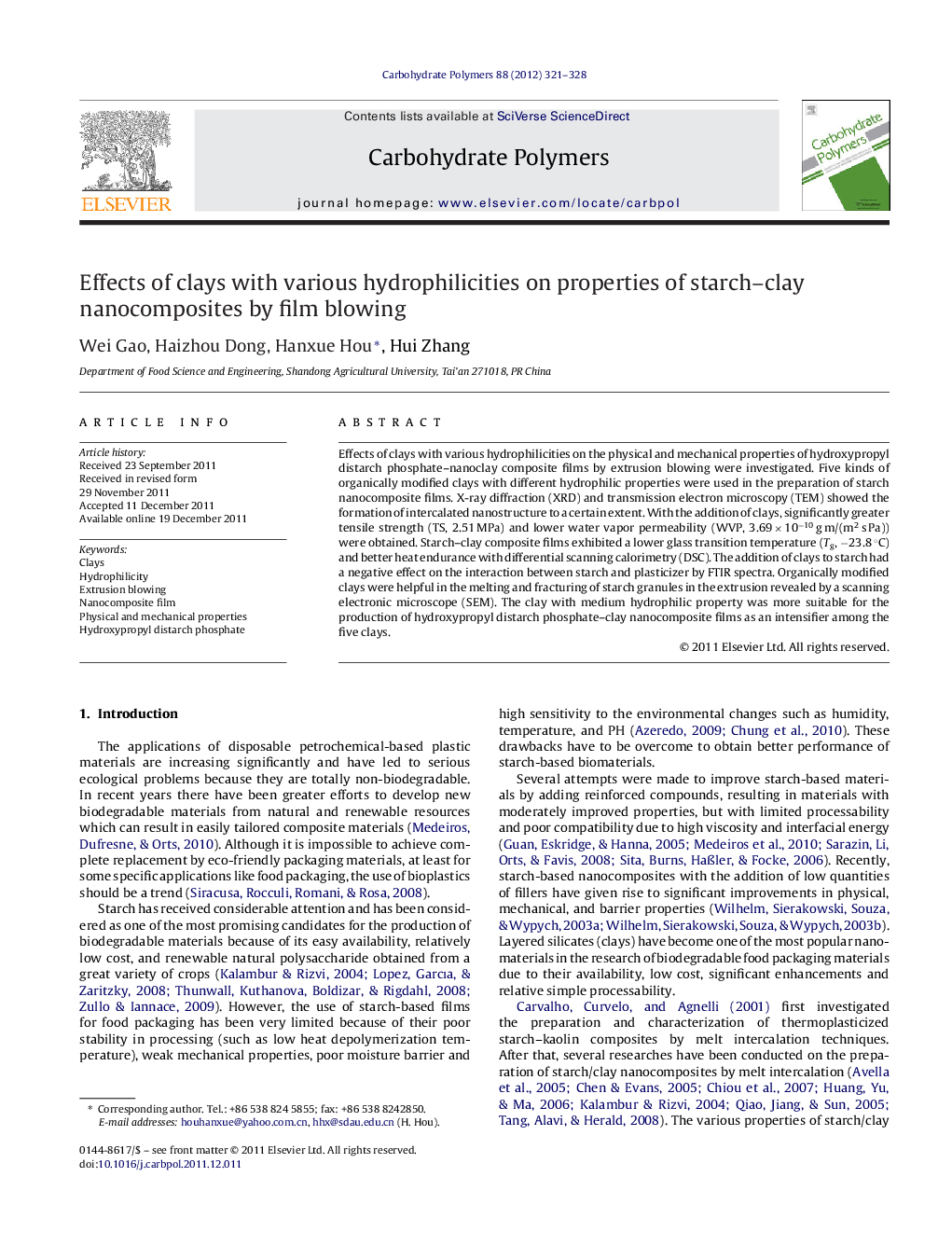| Article ID | Journal | Published Year | Pages | File Type |
|---|---|---|---|---|
| 1384968 | Carbohydrate Polymers | 2012 | 8 Pages |
Effects of clays with various hydrophilicities on the physical and mechanical properties of hydroxypropyl distarch phosphate–nanoclay composite films by extrusion blowing were investigated. Five kinds of organically modified clays with different hydrophilic properties were used in the preparation of starch nanocomposite films. X-ray diffraction (XRD) and transmission electron microscopy (TEM) showed the formation of intercalated nanostructure to a certain extent. With the addition of clays, significantly greater tensile strength (TS, 2.51 MPa) and lower water vapor permeability (WVP, 3.69 × 10−10 g m/(m2 s Pa)) were obtained. Starch–clay composite films exhibited a lower glass transition temperature (Tg, −23.8 °C) and better heat endurance with differential scanning calorimetry (DSC). The addition of clays to starch had a negative effect on the interaction between starch and plasticizer by FTIR spectra. Organically modified clays were helpful in the melting and fracturing of starch granules in the extrusion revealed by a scanning electronic microscope (SEM). The clay with medium hydrophilic property was more suitable for the production of hydroxypropyl distarch phosphate–clay nanocomposite films as an intensifier among the five clays.
► Nanocomposite films were made from modified starch and clays. ► The effects of clays with various hydrophilicities on properties of starch–clay films. ► Nanocomposite films were made by extrusion blowing. ► Medium hydrophilic clay had good compatibility with hydroxypropyl distarch phosphate.
